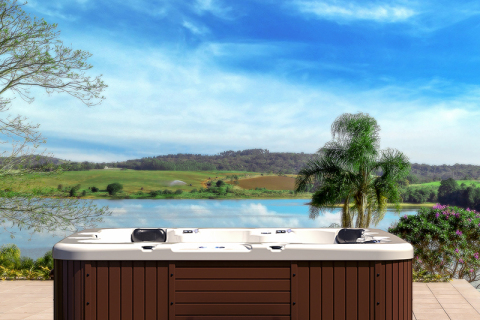
- Home
- >
News
Electric heaters are one of the most common types of hot tub heaters. They heat the water through a resistance element, are simple to install, and are widely used. Electric heaters usually cost between $500 and $1,500, depending on the power, brand, and heating efficiency. High-powered electric heaters heat water faster, but they also mean higher electricity costs.
Whirlpool bathtubs are not much different from ordinary bathtubs in appearance, but their interior is much more complicated. It is equipped with multiple jets, water pumps and air mixing systems, which are usually installed on the inner wall or bottom of the bathtub.
When the pH level in a hot tub is too low, the water becomes acidic, which can have significant effects on the skin. Acidic water weakens the natural barrier on the surface of the skin, making the skin more vulnerable to chemicals and bacteria, which can cause problems such as rashes.
Hot tubs are typically set at a maximum temperature of 104 degrees Fahrenheit, which is the upper safety limit set by the U.S. Consumer Product Safety Commission (CPSC) and many hot tub manufacturers.
After high-intensity exercise or long-term exercise, the muscles of the body will feel tight or painful. The warm water massage in the swimming spa can help relax muscles, promote blood circulation, and relieve muscle soreness.
One of the biggest advantages of swim spas is that they can bring swimming and hydrotherapy into family life. Swim spas installed at home can be used at any time without going out or making an appointment. Users only need to enjoy high-quality water sports and relaxation experiences at home.
Studies have shown that soaking in a hot tub for an hour may burn the same calories as taking a walk or doing a low-intensity exercise. This means that while hot tubs are not a replacement for exercise, they can certainly be used as an aid to weight loss, especially for those who are physically unable to engage in vigorous exercise, as hot tubs offer a low-impact, stress-free way to burn calories.
Although the water in the swim spa is disinfected, the effects of chemicals on the eyes are still a concern for many people. When the eyes are open, the chemicals in the water may irritate the eyes and cause discomfort.
In Swim Spa, combining aerobic exercise with strength training is the key to burning abdominal fat. Long-term aerobic exercise, such as running and swimming in water, can effectively increase calorie consumption, while strength training, such as water squats and plank support, can help strengthen muscle strength and further increase basal metabolic rate.
Depending on the frequency of use of the swim spa and the water quality conditions, the consumption of these chemicals varies. Generally speaking, the amount of chemicals used may range from tens to hundreds of dollars per month. Especially for swim spas with high frequency of use, the consumption of chemicals will be higher.
Swim Spas installed underground will be affected by soil pressure and groundwater level. In humid areas, when the groundwater level is high, it may affect the normal operation of the Swim Spa and even cause damage to the structure of the equipment.
A faulty or malfunctioning pump is one of the main reasons why the swim spa filter does not flow. The pump is the power source that drives the water flow. If the pump does not work or is inefficient, water will naturally not be able to pass through the filter.












